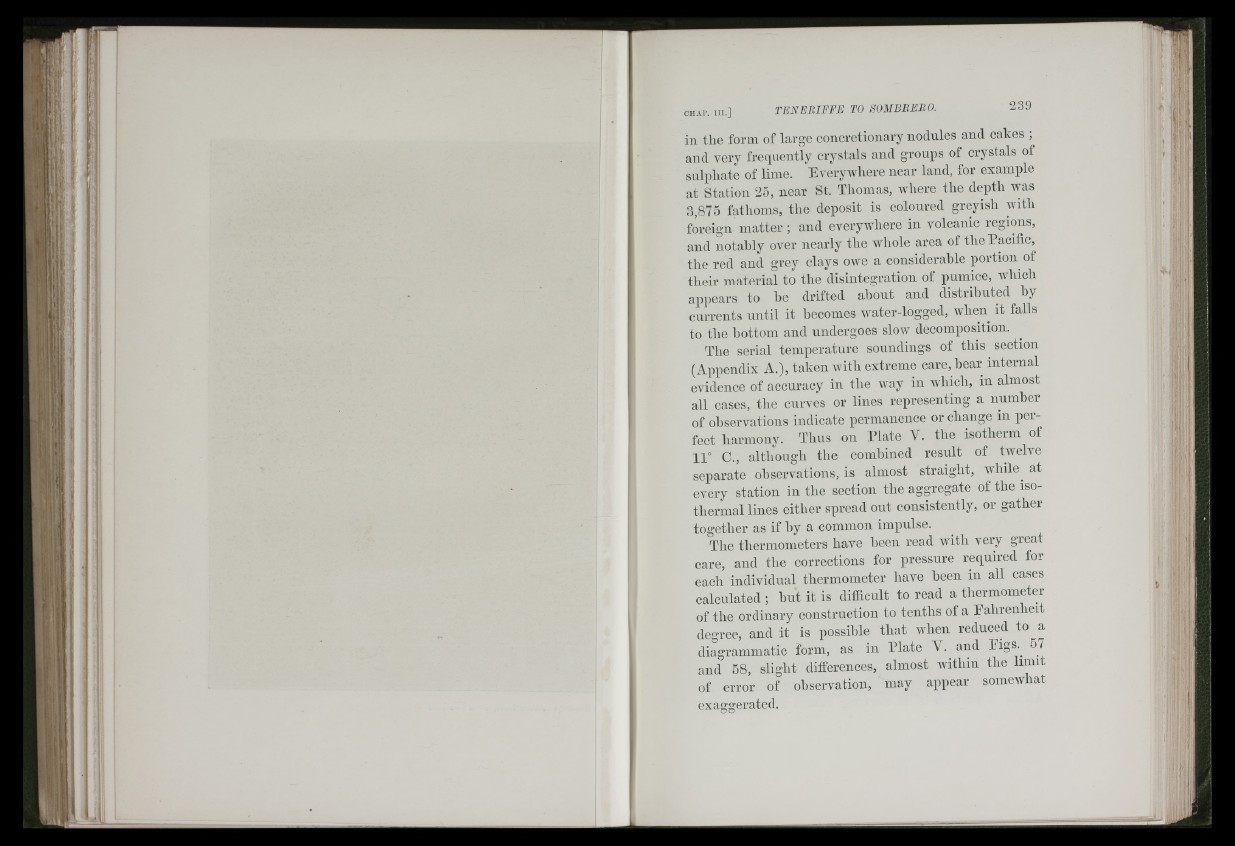
in the form of large eoncretionary nodules and cakes ;
and very frequently crystals and groups of crystals of
sulphate of lime. EveryAvhere near land, for example
at Station 25, near St. Thomas, AA'here the depth Avas
3,875 fathoms, the deposit is coloured greyish with
foreign matter; and everyAA'liere in volcanic regions,
and notably over nearly the AA'hole area of the Pacific,
the red and grey clays owe a considerable portion of
their material to the disintegration of pumice, Avhich
appears to he drifted about and distributed by
currents until it becomes Avater-logged, when it falls
to the hottom and undergoes s I o a v decomposition.
The serial temperature soundings of this section
(Appendix A.), taken Avitli extreme care, hear internal
evidence of accuracy in the way in which, in almost
all cases, the curves or lines representing a numher
of ohservations indicate permanence or change m perfect
harmony. Thus on Plate V. the isotherm of
11° C., although the combined result of twelve
separate ohservations, is almost straight, Avhile^ at
every station in the section the aggregate of the isothermal
lines either spread out consistently, or gathei
together as if hy a common impulse.
The thermometers have heen read with very great
care, and the corrections for pressure required for
each individual thermometer have heen in all cases
calculated ; hut it is ditficnlt to read a thermometer
of the ordinary construction to tenths of a Ealirenheit
degree, and it is possible that when reduced to a
diagrammatic form, as in Plate Y. and Eigs.^ o l
and 58, slight differences, almost within the limit
of error of observation, may appear somewhat
exaggerated.
.j ;|
• lib